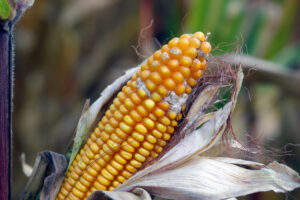Summer may not officially begin until June 20, but flies, ants and other summer pests don’t pay attention to the calendar. Rather, it is the warm temperatures, increased availability of food and water, and longer days that bring about new generations and increased activity. And it is the open doors, structural gaps, and delectable odors that entice these (and other year-round pests) into your food facility. With all this in mind, it should come as no surprise that June 6th has been named World Pest Day 2024. And the best way to celebrate is by conducting a complete review of your pest management program – from prevention to control.
Pests are a serious food safety issue in food facilities. They are so serious, in fact, that the second highest number of 2023 FDA 483 inspection observations (for conditions deemed to be objectionable and in violation of regulation) were for pest issues. Though well below the top observation, lack of FSVP development (789 citations), the 192 citations directly related to pests was well above all others except sanitation issues – which are, in themselves, frequent causes of pest issues. Additionally, at least 35 warning letters have been issued over the last year by FDA with citations for pests.
| 2023 FDA 483 inspection observations for pest issues | ||
| Frequency | Reference Number | Short Description |
| 173 | 21 CFR 117.35 | Lack of pest control |
| 9 | 21 CFR 111 | Lack of: pest control/cleaning records, written procedures for pest control, pest control measures; animals and pests in facility |
| 7 | 21 CFR 112.128 | Pests and/or pest contamination in buildings |
| 3 | 21 CFR 118.10 | Lack of rodent and pest control documentation |
Why is FDA so focused on pests? Whether insect, rodent, or bird, a pest can contaminate food and packaging with their droppings, urine, hair, and feathers which can spread disease. Many are known carriers of pathogens such as Salmonella and E. coli, with more than 60 diseases linked to flies, cockroaches, mice, rats and pest birds.
Additionally, using the presence of filth and extraneous materials as a criterion in assessing food adulteration of public health importance, the FDA identified what it called the ‘Dirty 22’ pest species as contaminants of foods. Classified into four groups: Group I (4 cockroach species), Group II (2 ant species), Group III (12 fly species), and Group IV (4 rodent species), the presence of any of the 22 common pest species is considered an indicator of unsanitary conditions in food processing and storage facilities having the ability to spread foodborne illness.
In fact, the infamous PCA Salmonella outbreak, that led to both the closedown of the business and the imprisonment of executives, was linked, at least in part, to the cockroaches and rodents found by FDA inspectors, along with the likelihood that leaked water from the roof carried with it bird droppings to the processing area and the peanut product. But even if the finding of pests in a facility doesn’t cause the complete closure of a business, contamination can lead to temporary shutdowns, expensive recalls, reputational damage, and, worse, consumer illness or even death.
Whether dealing with the first wave of seasonal flies or ants attempting to invade your facility or the ongoing battle against year-round cockroaches and rodents, it is essential that pest control be an integrated aspect of your food safety program.
In FDA’s draft guidance for Hazard Analysis and Risk-Based Preventive Controls for Human Food, pest is defined as “any objectionable animals or insects including birds, rodents, flies, and larvae”; and insects and pests are listed as one of the most common sources of both biological and physical hazards that can contaminate the food processing environment. (Tables 3-2, 3-4 and 3-9) Thus, the Food Safety Plan must include the hazard analysis and control of pests as both potential biological and physical hazards.
To prevent and address pest problems, an internal pest expert or outsourced service provider should conduct regular inspections and implement integrated pest management (IPM) strategies.
IPM is based on three foundational tactics: prevention, inspection, and control.
- Prevention. Sanitation is one of the most critical aspects of prevention. Maintaining a sanitary environment limits the potential for food sources, water, and shelter for pests. Ensuring that the building and equipment are well maintained furthers the inability for pests to enter or find shelter (e.g., cracks and gaps sealed, doors and windows tightly fitted, and employees instructed to keep doors closed). Proper storage practices such as first in/first out inventory rotation, pest-proof packaging, and sanitation are also critical for prevention.
- Inspection. The regular inspection of every part of both the interior and exterior of the facility, and the use of monitoring tools such as traps, are essential to detect any signs of pest activity (e.g., droppings, urine, hairs, gnaw marks, and live or dead pests themselves). The sooner presence is detected, the more easily it can be eliminated. If anything is detected, proper identification is needed to determine the most effective control methods.
- Control. Mechanical and physical controls should be the first line of defense so as to limit the amount of chemical needed in the facility. This can include traps, air curtains and other physical barriers to exclude pests or provide prompt capture. When chemical controls are needed, they should be targeted as much as possible with the least toxic, but effective, products selected. Of course, all regulatory guidelines must be followed, and care taken so pesticides don’t contaminate foods, packaging and food-contact surfaces.
Integrating these practices and adapting prevention and control strategies to the changing seasons, and to monitoring results, will effectively mitigate pests to help ensure food safety.
Whether you are dealing with pest pressures or attempting to get ahead of them through prevention, TAG can help in your hazard assessment and mitigation strategies to both protect your food and comply with regulations. Give us a call!





